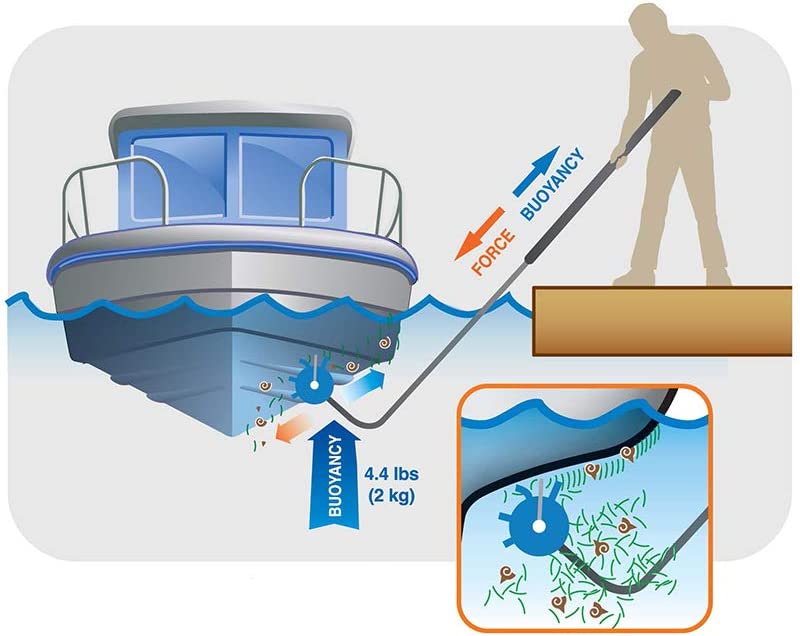| SJ23 Tech Tip G09, (Created 2017-04-21) Bob Schimmel | |
|
Antifouling Paint for the Hull. |
|
|
Applying antifouling bottom paint to an SJ23 can be a real pain when it comes to coating the keel stub or moving a trailer member for complete coverage. For this reason I might lean towards an ablative paint so you don't have to strip it prior to painting. However, if the boat is trailer launched, I would lean towards a hard ablative, if there is such a thing. But above all, the paint must work well in your area. PROBLEM - So, have you ever wondered how many coats of paint are on your bottom (no not the one you're sitting on) and what kind? Despite the fact that you used ablative paint that stuck well, the bottom is looking rougher each year with sections of paint that have flaked off. While you may feel good about the new layer you are applying, each pass of the roller pulls off more old paint from the hull. So what's going on? SOLUTION - You likely have too much old paint built up on the hull that is affecting adhesion. How much is too much is dependent on the type of paint: hard or ablative. With a hard paint, loss of adhesion will begin around 2.0 MM of thickness (about 10 coats). Having too many layers makes the inner ones less flexible and more likely to chip, flake or loose adhesion. The old layers must be removed mechanically with 60 grit sandpaper or soda blasting. The old paint has lost its antifouling properties and is no longer active, despite the fact that it may look great. 1 or 2 coats is all that is recommended.
If youíve determined that youíre past either of these thresholds, you might want to consider a complete re-finish. Paint removal options vary, and whatís best will depend on how much old paint there is and your personal preference. If there arenít that many layers of bottom paint, you can sand them off with an 8", dual-action orbital sander and 60-grit sandpaper, but this is hard work and requires careful safety precautions. Overzealous sanding can lead to dings and divots in the gel coat. Another option is using a chemical paint stripper like Peel Away or Franmar Soy Strip. Chemical paint strippers break down the adhesive bond of the paint and make it easier to scrape down to a clean substrate that can be repainted. This is messy and noxious work, but itís less back-breaking than sanding. The performance of a stripper varies by boat and temperature, so do some research on various strippers. It may be wise to switch to another stripper. Both of these methods will be time consuming. You may want to pay to have this done professionally. Eventually adhesion suffers. How long you wait to strip the old paint off depends on how bad the adhesion issue is and your tolerance for a rough bottom. The rough surface means more drag in the water and slower boat speed. If you start fresh with an application of ablative paint followed up with regular application of one to two coats for a season, it can prevent paint build up. For help in selecting an ablative bottom paint that is best suited for your area, ask your fellow sailors in the marina. Local knowledge can be useful for making this decision.
|
|
|
Return to Tech Tip Index. . . . . . . . . . . . . . . Have a Question? |
|
 SCRUB - The alternative to anti fouling paint is to scrub the bottom on
a monthly basis to keep the slime away. This works in fresh water,
especially if its cold. Slime grows at different
rates from one summer to the next. So you have to monitor this and
adjust your schedule to suit. A long brush with a curved handle
works well. I've done this from my dinghy with the boat at the
mooring as long as the water is calm. But if you move the boat to shallow water
where you can stand on the bottom, you'll find the hull cleans quicker and better.
A trick is to attach a fender to the end of the brush. The
floatation pushes the business end of the brush harder against the hull,
making cleaning easier. That was OK till I discovered
SCRUB - The alternative to anti fouling paint is to scrub the bottom on
a monthly basis to keep the slime away. This works in fresh water,
especially if its cold. Slime grows at different
rates from one summer to the next. So you have to monitor this and
adjust your schedule to suit. A long brush with a curved handle
works well. I've done this from my dinghy with the boat at the
mooring as long as the water is calm. But if you move the boat to shallow water
where you can stand on the bottom, you'll find the hull cleans quicker and better.
A trick is to attach a fender to the end of the brush. The
floatation pushes the business end of the brush harder against the hull,
making cleaning easier. That was OK till I discovered